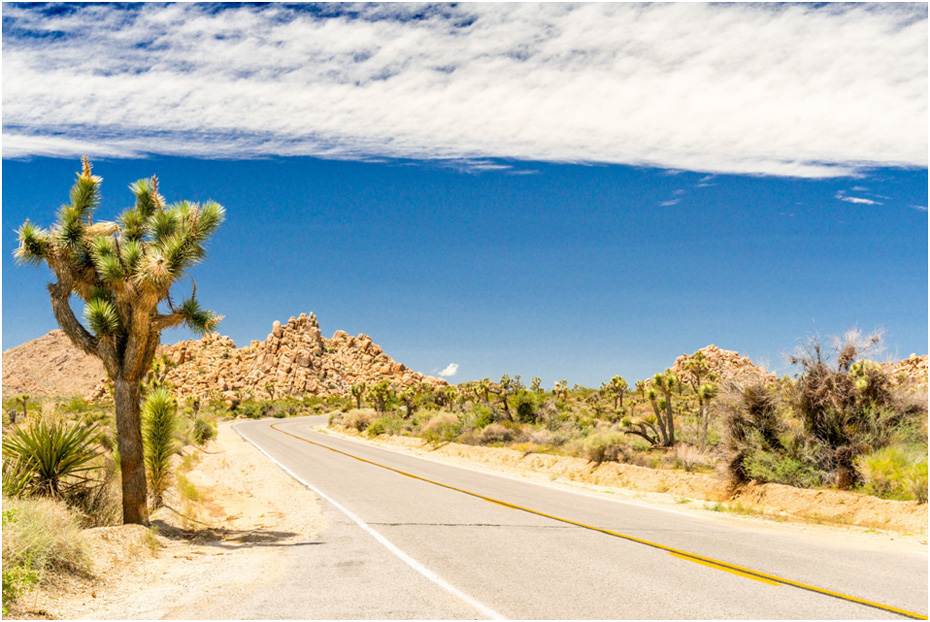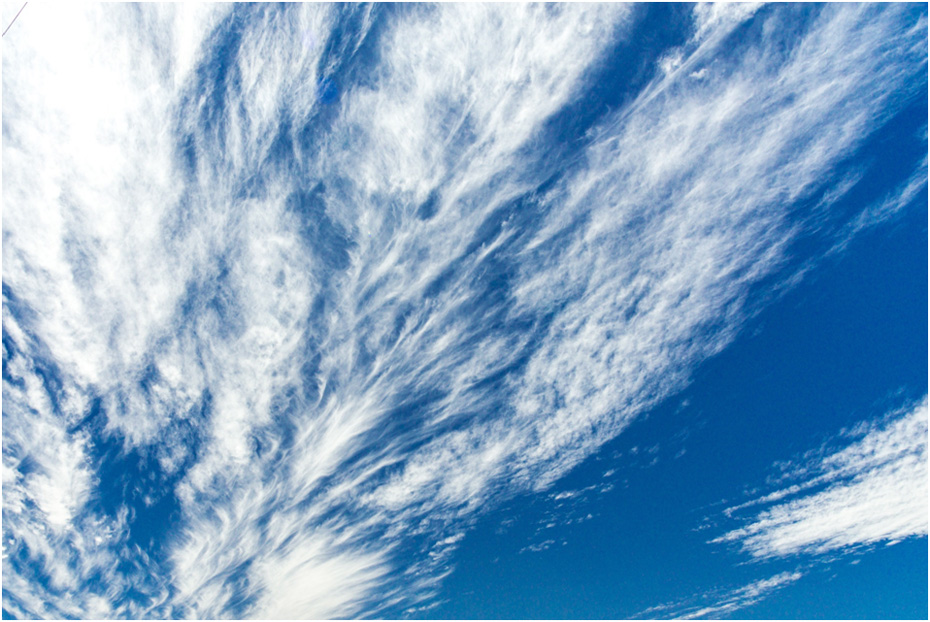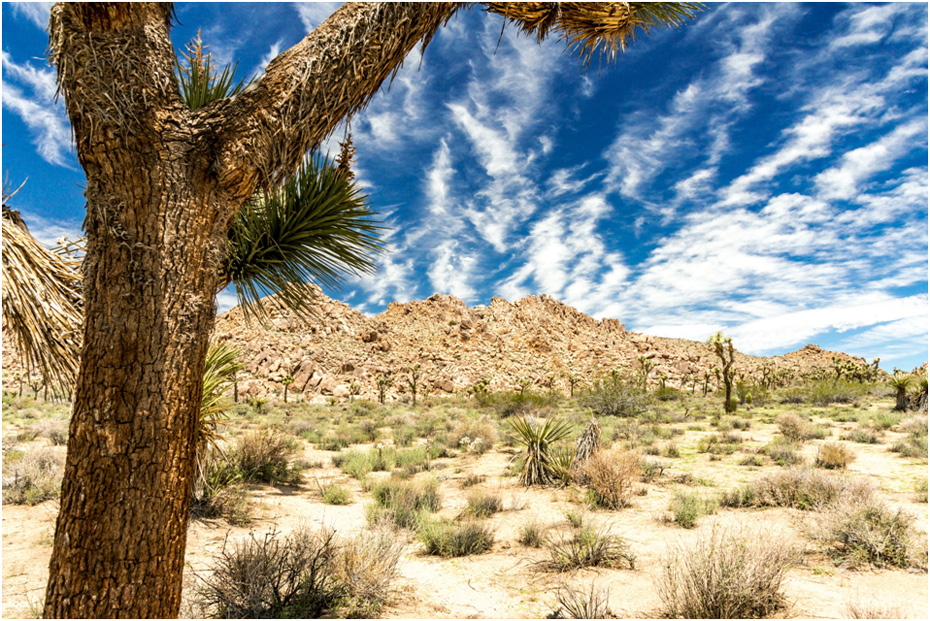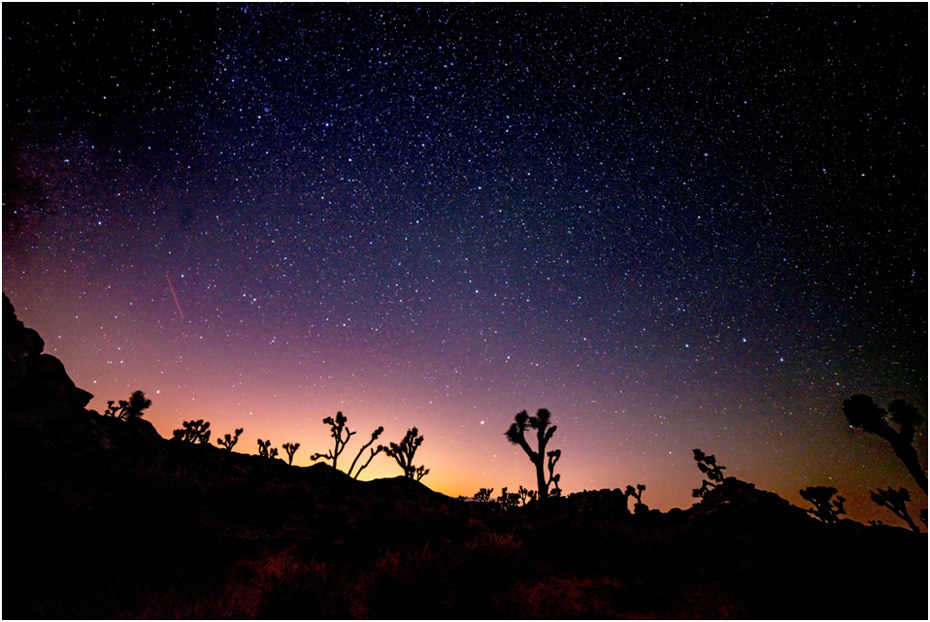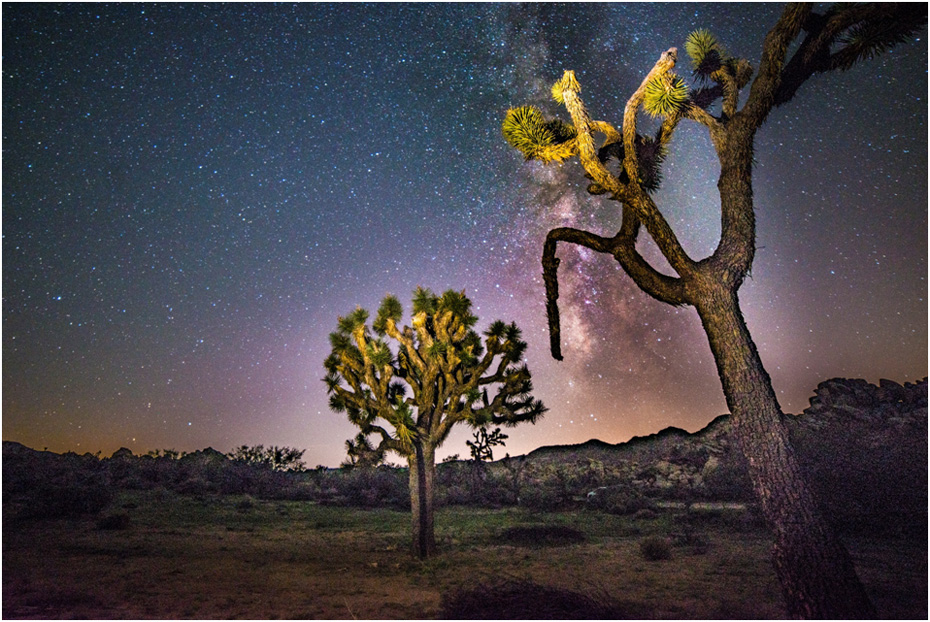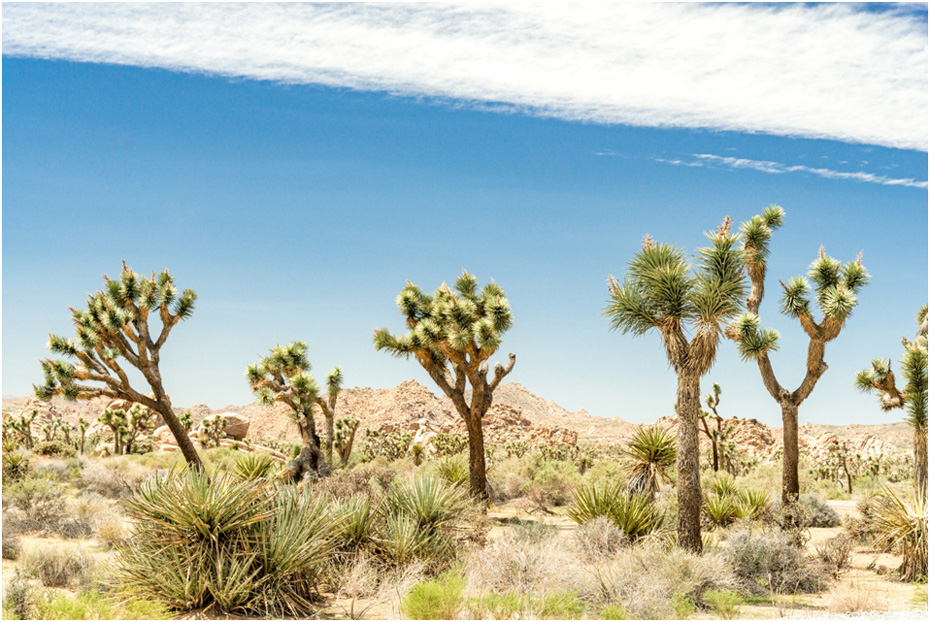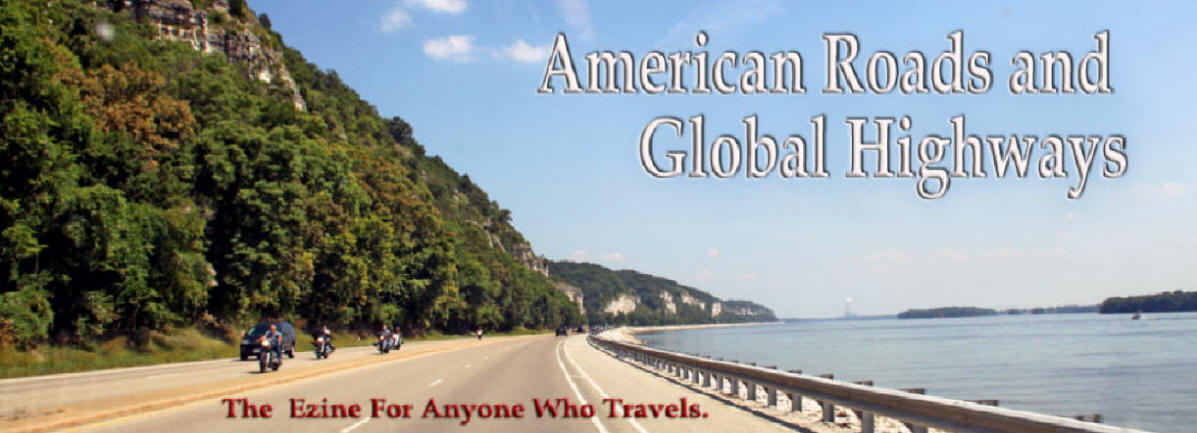
|
|
|
|
The prickly trees reach toward the sky like praying hands into the heavens. The Mormons saw these trees, and it reminded them of Joshua. The branches of the trees point their way westward like Joshua in an appeal for a safe journey to the promised land. Yucca brevifolia has a small range limited to the boundaries of the Mojave Desert. The magnificent examples of hardiness can live for hundreds of years; some manage the extremes of the arid landscape for a thousand years. The best place to see the Joshua Tree is in, of all places, Joshua Tree National Park. An easily accessible drive near Palm Springs, California. The small town of Joshua Tree, CA sports a few tattoo parlors, a real western saloon café, and a couple of Mexican restaurants.The park is reached by The 10 in the south, or by Highway 62 on the northern periphery. The latter route takes you to Twenty Nine Palms, popularized in a song, "The Lady from 29 Palms", written by Allie Wrubel in 1947 and recorded by such artists as Frank Sinatra, Freddy Martin, Tony Pastor, and The Andrews Sisters. It's a fun listen, especially on the drive out.
The landscape of Joshua Tree National Park is stark and arid with boulders and rocky outcroppings dotting the terrain. It is these features, along with the Joshua Trees, that make this a photographer's paradise.
Because of the dark skies at Joshua Tree National Park, it is a haven for astrophotographers looking to capture the stars in all their glory. Most often, it is the Milky Way they chase. The images are always impressive, but in-reach for even amateur photographers, if you know the secret formula. So, I’ll relate it here: 1. Set your camera to manual mode. 2. Set your ISO to 3200 3. Set your shutter speed to 30 seconds 4. Best results are obtained with a wide fast lens, e.g., 14mm at f/2.8 TThat’s all there is to it. A small flashlight can be used to light-paint the foreground. It only takes a little bit, a one-second sweep during the 30-second exposure does the trick.
Per the National Park Service website:o:p>
What to bringa name="onthisPage-4">
We'd love your comments!
|
Connect with us on:
American Roads and | ||
|
Public Disclosure--
Please Read The FTC has a law requiring web sites to let their readers know if any of the stories are "sponsored" or compensated. We also are to let readers know if any of our links are ads. Most are not. They are just a way to direct you to more information about the article where the link is placed. We also have several ads on our pages. They are clearly marked as ads. I think readers are smart enough to know an ad when they see one but to obey the letter of the law, I am putting this statement here to make sure everyone understands. American Roads and Global Highways may contain affiliate links or ads. Further, as their bios show, most of the feature writers are professional travel writers. As such we are frequently invited on press trips, also called fam trips. On these trips most of our lodging, dining, admissions fees and often plane fare are covered by the city or firm hosting the trip. It is an opportunity to visit places we might not otherwise be able to visit. However, no one tells us what to write about those places. All opinions are 100% those of the author of that feature column. |
|||
|
Privacy Policy/ Archives /
Contributors /
Subscribe to
American Roads Books by
Kathleen Walls /
Contact /
Sponsor or Advertise/ American Roads & Global Highways Home Page
|

